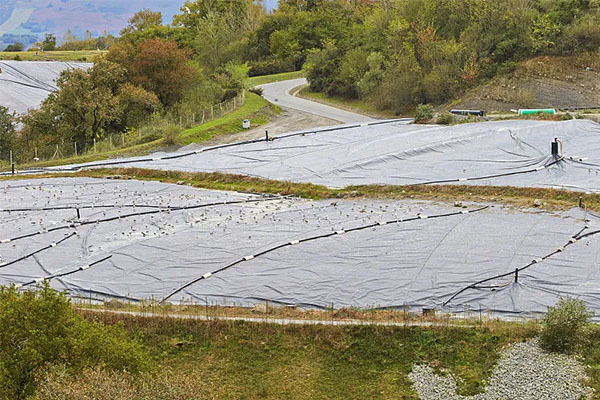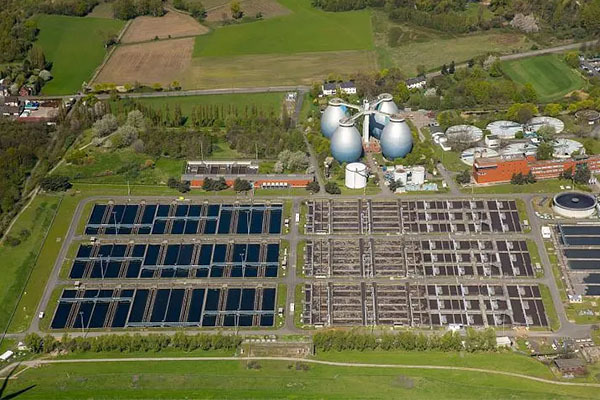Exploring the Benefits of Using HDPE Unidirectional Geogrid in Construction: A Comprehensive Guide
Release time:
2025-05-13
Exploring the Benefits of Using HDPE Unidirectional Geogrid in Construction In the ever-evolving field of construction, the quest for materials that enhance structural integrity and longevity is paramount. One such material that has gained significance in recent years is the HDPE unidirectional geogrid. This innovative solution presents numerous advantages that can significantly improve constructi
Exploring the Benefits of Using HDPE Unidirectional Geogrid in Construction
In the ever-evolving field of construction, the quest for materials that enhance structural integrity and longevity is paramount. One such material that has gained significance in recent years is the HDPE unidirectional geogrid. This innovative solution presents numerous advantages that can significantly improve construction projects. In this article, we will explore the benefits, applications, and key considerations of HDPE unidirectional geogrids in the construction industry.
Table of Contents
- Understanding HDPE Unidirectional Geogrid
- Benefits of HDPE Unidirectional Geogrid in Construction
- Applications of HDPE Unidirectional Geogrid
- Installation Criteria for HDPE Unidirectional Geogrid
- Maintenance Considerations
- Frequently Asked Questions
- Conclusion
Understanding HDPE Unidirectional Geogrid
HDPE, or High-Density Polyethylene, is a versatile plastic widely used in various industries, including construction. The unidirectional geogrid is a type of geosynthetic material designed to reinforce soil. It consists of a network of high-strength polymer strands oriented in a single direction, which enhances its tensile strength and provides superior structural support.
The unique configuration of the HDPE unidirectional geogrid allows it to efficiently distribute loads across a broader area, making it an ideal choice for applications requiring soil reinforcement. Its durability and resistance to environmental factors further enhance its effectiveness in construction projects.
Benefits of HDPE Unidirectional Geogrid in Construction
Soil Stabilization
One of the primary benefits of HDPE unidirectional geogrid is its ability to stabilize soil. By reinforcing the soil structure, it reduces the likelihood of erosion and ground movement, which can compromise the integrity of structures built on or within the soil. The geogrid’s design allows it to interlock with the soil particles, creating a composite material that significantly enhances stability.
Enhanced Load Distribution
HDPE unidirectional geogrids effectively distribute loads from the surface to the underlying soil, minimizing stress concentrations. This is particularly beneficial in applications such as road construction where heavy traffic loads are expected. The improved load distribution reduces the risk of pavement failure and extends the lifespan of road surfaces.
Cost Efficiency
Utilizing HDPE unidirectional geogrid can lead to significant cost savings. By improving soil stability and load distribution, projects require less excavation, backfill, and additional construction materials. Consequently, this lowers labor and material costs, making it a financially viable option for contractors and project managers.
Environmental Benefits
In an age where environmental sustainability is crucial, HDPE unidirectional geogrids contribute positively by reducing the need for extensive earthworks. This minimizes the environmental impact associated with traditional construction methods. Furthermore, the longevity of structures reinforced with geogrids leads to less frequent repairs and replacements, ultimately conserving resources.
Applications of HDPE Unidirectional Geogrid
Road Construction
HDPE unidirectional geogrids are widely used in road construction projects to enhance the load-bearing capacity of the pavement structure. By employing geogrids, engineers can create more resilient roads that withstand heavy traffic and adverse weather conditions. The use of geogrids in subgrade preparation leads to reduced rutting and crack formation, ensuring safer travel.
Retaining Walls
Retaining walls constructed with HDPE unidirectional geogrids offer superior stability and longevity. The geogrid reinforces the wall structure, preventing soil movement and minimizing the risk of wall failure. This application is particularly beneficial in areas with steep slopes or heavy rainfall, where soil erosion is a significant concern.
Landfills and Waste Management
In landfill applications, HDPE unidirectional geogrids play a vital role in enhancing the stability of the waste fill. They help control settlement and reduce lateral movement, ensuring the integrity of the landfill structure. The use of geogrids in waste management promotes efficient land use while mitigating environmental impacts.
Installation Criteria for HDPE Unidirectional Geogrid
For optimal performance, the installation of HDPE unidirectional geogrid must adhere to specific criteria. Proper site preparation, including grading and compaction, is essential to ensure a stable foundation. The geogrids should be laid flat without wrinkles or overlaps, and the required tension must be applied to maximize load distribution. Additionally, it is crucial to ensure that the geogrid is adequately covered with soil to protect it from UV exposure and mechanical damage.
Maintenance Considerations
While HDPE unidirectional geogrids are designed for durability, regular maintenance is essential for ensuring long-term performance. Monitoring the installation site for signs of erosion or movement is crucial. Additionally, prompt repairs should be made if any issues arise, such as soil displacement or damage to the geogrid. By adhering to a consistent maintenance routine, the lifespan of structures reinforced with geogrids can be significantly extended.
Frequently Asked Questions
1. What is the primary function of HDPE unidirectional geogrid?
The primary function of HDPE unidirectional geogrid is to reinforce soil structures, enhancing stability and load distribution in construction projects.
2. How does HDPE unidirectional geogrid improve soil stability?
HDPE unidirectional geogrid improves soil stability by interlocking with soil particles, creating a composite material that reduces erosion and ground movement.
3. Can HDPE unidirectional geogrid be used in residential construction?
Yes, HDPE unidirectional geogrid can be used in residential construction, particularly for enhancing the stability of foundations and driveways.
4. Is the installation of HDPE unidirectional geogrid complicated?
Installation is straightforward but requires proper site preparation and adherence to specific guidelines to ensure optimal performance.
5. What are the environmental benefits of using HDPE unidirectional geogrid?
Using HDPE unidirectional geogrid minimizes the need for extensive earthworks and reduces the environmental impact associated with traditional construction methods.
Conclusion
In conclusion, the integration of HDPE unidirectional geogrid in construction projects offers numerous benefits that enhance soil stability, improve load distribution, and promote cost efficiency. With various applications ranging from road construction to landfill stabilization, this innovative material presents a sustainable solution to modern construction challenges. As we continue to explore advanced materials and techniques, HDPE unidirectional geogrid stands out as a key player in shaping the future of construction.






